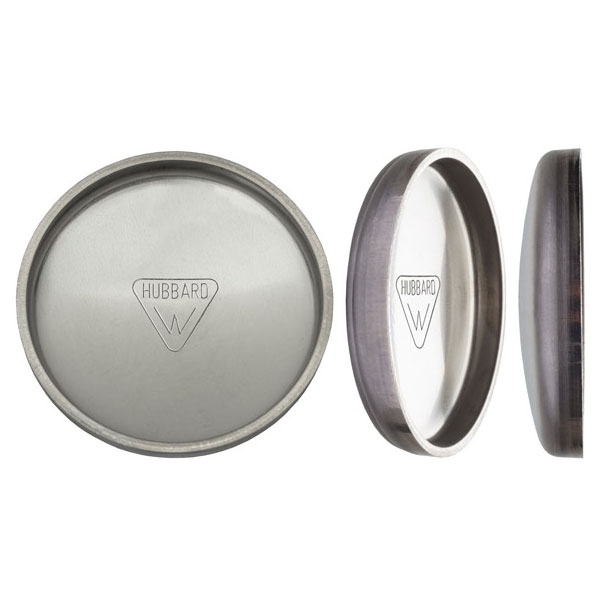More Information

Hubbard Spring’s “Spring-Lock” series of core plugs have been engineered with a tapered edge that once installed creates a positive seal and prevents leakage.
We have indexed these plugs by the hole size they are intended to seal – once the hole size is chosen the plug that has been engineered to seal that hole is the search result.
The following plug characteristics have been engineered for maximum sealing effectiveness:
- Press / interference fit with the cast / machined hole.
- Taper needed for maximum “Spring-Lock” effect.
- Surface finish requirements of bore engaging “H2” surface.
- Clear guidelines for measurement and qualification of all variables that relate to seal.
The “Spring-Lock” series was developed based on decades of experience sealing core holes in the following products:
- Engine blocks.
- Transmission cases.
- Transfer Cases.
- Gear Boxes.
- Castings of all kinds.
With the OEM push to lighten passenger vehicles, there are many more applications that are now using cup plugs than ever before.
Overhead cam shafts, drive shafts, and pistons are just a few of the newer applications we have been involved with that are consciously being left hollow for weight reduction.
Materials
- SAE 1008/1010 low carbon steel: ASTM#A109
- 304 Stainless Steel: ASTM#A313
Stainless steel plugs are often used for aluminum blocks / castings, and steel plugs are typically used for steel blocks / castings.
Stainless steel plugs offer the following advantages over carbon steel plugs:
- Stainless scores and galls less during insertion.
- Stainless has more “spring back”, improving the “spring-lock” effect.
As a result of these advantages, our stainless steel plugs have been engineered with more press / interference fit than our carbon steel plugs.
This results in a better seal, better resistance to blowout under pressure, and better long term performance with thermal expansion than carbon steel plugs.
Brass and Aluminum plugs can be produced – these are generally for marine applications.
Finishes
- Steel: provided either plain finish or zinc electroplated.
- Stainless Steel: plain finish.
A wide range of other finishes are available upon request.
Both steel and stainless steel plugs are tumbled for a clean, burr free finish.

Diameter Measurements, “d”:
- Diameter measurements are taken 0.5mm from the bottom, or edge of the cup as shown in the drawing below.
- The diameter is the average of four equally spaced measurements taken from the perimeter of the cup plug.
- The diameter measurement is taken before plating.
Roundness Measurements:
- Roundness is the difference between the maximum and minimum diameter measurement.
- The roundness measurement should not be greater than 0.08mm for carbon steel and 304 stainless steel.
- The roundness measurement should not be greater than 0.1mm for 400 series stainless steel.
Thickness Measurements, “s”:
- The thickness measurement is ALWAYS taken from the domed portion of the plug, as is shown in the drawing above.
Taper Measurements:
- Is calculated based on diameters “d” and “d2”.
- Diameter “d2” is taken at a location equal to or greater than “h2”.
- The distance between measurement “d” and “d2” is “h'”.
- The taper angle is then calculated using trigonometry: TAN of (d-d2)/2/h’
Inside Radius, “r2”:
- Is equal to the material thickness +/-0.5mm – although this will vary some with plug sizes, metal thicknesses, etc.
Gage Diameter, d5 and d6:
- This gage, or zero indicator, is intended to match the installation tool in OD and points of contact on the inside of the cup plug.
- d5=(minimum bore diameter)-2(s)-0.55mm
- d6=d5-2(r2)

DIN 443
The Hubbard “Spring Lock” series of metric core / cup plugs are largely equivalent to DIN 443 plugs.
The critical, or defining characteristic of both the Hubbard and DIN 443 plug is that the nominal plug diameter is actually the nominal hole size – both plugs are tapered for a pre-engineered press, or interference fit.
So a 25mm Hubbard plug and a 25mm DIN443 plug will perform the same function.
However, our plugs rarely match all DIN 443 variables perfectly – there are often small variations on bottom radius, height, corner radius, and material thickness.
Below is a list of DIN443 plugs as defined by the standard, with the last column listing our functional equivalent.
| Diameter (D) | Height (h) | DIN443 Thickness (s) | Hubbard Steel Equivalent | Hubbard Stainless Equivalent |
| 8 | 3 | 0.75 | CP-317-S-40 | |
| 10 | 3 | 0.75 | | |
| 12 | 4 | 1.0 | | CP-479-KS-40 |
| 14 | 5 | 1.0 | CP-558-S-40 | CP-560-KS-40 |
| 15 | 5 | 1.0 | | CP-598-KS-40 |
| 16 | 5 | 1.0 | CP-636-S-58 | CP-638-KS-40 |
| 18 | 6 | 1.0 | CP-716-S-40 | CP-716-KS-40 |
| 20 | 6 | 1.0 | CP-797-S-40 | CP-796-KS-40 |
| 22 | 7 | 1.6 | CP-875-S-60 | CP-875-KS-60 |
| 24 | 7 | 1.6 | CP-951-S-58 | |
| 25 | 8 | 1.6 | | CP-994-KS-50 |
| 28 | 9 | 1.6 | CP-1113-S-65 | |
| 30 | 9 | 1.6 | CP-1192-S-58 | CP-1189-KS-50 |
| 36 | 11 | 1.6 | | CP-1430-KS-60 |
| 40 | 12 | 1.6 | | CP-1590-KS-60 |
| 42 | 13 | 1.6 | CP-1666-S-60 | |
| 45 | 14 | 1.6 | | |
| 50 | 15 | 1.6 | | |
| 56 | 17 | 2.0 | | |
| 63 | 19 | 2.0 | | |







